#House Extension Architect in London
Explore tagged Tumblr posts
Text
Enhancing Your Living Space: The Role of a House Extension Architect in London
The demand for house extension architects is rising in the dynamic and ever-evolving landscape of London's real estate market. Homeowners seeking to maximise their living space and add value to their properties often turn to these professionals for their expertise in crafting innovative and functional extensions. This comprehensive guide delves into the critical aspects of house extension architects, exploring their role, benefits, and unique considerations.

Understanding the Role of a House Extension Architect:
A house extension architect is a skilled professional with spatial design, construction, and project management expertise. Their primary responsibility is collaborating with homeowners to conceptualise and execute house extensions that seamlessly integrate with the existing structure while meeting the client's specific needs and aesthetic preferences. These architects bring a wealth of knowledge, combining creativity with technical proficiency to deliver tailored solutions.
The Process of House Extension Architecture:
Initial Consultation:
The journey begins with an in-depth consultation between the architect and the homeowner. During this phase, the architect assesses the existing property, understands the client's requirements, and establishes a clear vision for the extension project.
Design Phase:
Armed with insights from the initial consultation, the architect starts the design process. This phase involves creating detailed plans and considering factors such as spatial flow, natural light, and adherence to local building regulations. The goal is to produce a design that complements the existing structure and enhances functionality and aesthetics.
Planning Permission:
House extension architects are crucial in navigating the complexities of obtaining planning permission. They are well-versed in local regulations and work closely with authorities to ensure the proposed extension meets all necessary requirements.
Construction and Project Management:
Once planning permission is secured, the architect oversees the construction phase. They collaborate with builders, contractors, and other professionals to ensure the project progresses smoothly. This includes managing timelines and budgets and addressing any unforeseen challenges during construction.
Benefits of Hiring a House Extension Architect:
Tailored Design:
House extension architects tailor their designs to suit each client's unique needs and preferences. This bespoke approach ensures that the extension seamlessly integrates with the existing property, both aesthetically and functionally.
Maximising Property Value:
Well-designed and executed house extensions can significantly increase a property's value. A thoughtfully planned extension adds both square footage and appeal, making it an attractive prospect for potential buyers.
Navigating Building Regulations:
House extension architects possess a deep understanding of local building regulations. This expertise is invaluable in securing planning permission and ensuring the project complies with all legal requirements.
Cost-Effective Solutions:
While hiring a house extension architect requires an initial investment, their expertise often leads to cost-effective solutions in the long run. Their ability to optimise space, materials, and construction processes can result in savings during the project's execution.
Considerations for London Homeowners:
Conservation Areas:
London boasts numerous conservation areas with specific regulations governing alterations and extensions. House extension architects in London are well-versed in navigating these constraints, ensuring that proposed extensions align with conservation guidelines.
Urban Planning Challenges:
London's densely populated nature presents unique challenges regarding house extensions. Architects must consider the surrounding environment, neighbouring properties, and urban landscape to create harmonious additions.
In the vibrant city of London, where space is a premium commodity, the expertise of a house extension architect is invaluable. These professionals bring creativity, technical proficiency, and local knowledge, resulting in bespoke extensions that enhance lifestyle and property value. Whether embarking on a contemporary redesign or preserving the charm of a period home, a house extension architect is a critical partner in realising the full potential of your living space.
#House Extension Architect in London#House Extension Architect#bathroom#bedroom#decor#gardening#furniture#home decor#home & lifestyle#interior design#interiors#kitchen
0 notes
Text







Harrow Road, London - O'Sullivan Skoufoglou Architects
#O'Sullivan Skoufoglou Architects#architecture#design#building#modern architecture#interiors#minimal#house#house design#modern#old and new#brick#timber#wood#house extension#terraced houses#london house#london#british architecture#cool homes#beautiful design#beautiful architecture#kitchen#bedroom#loft conversions#light#design blog
102 notes
·
View notes
Text
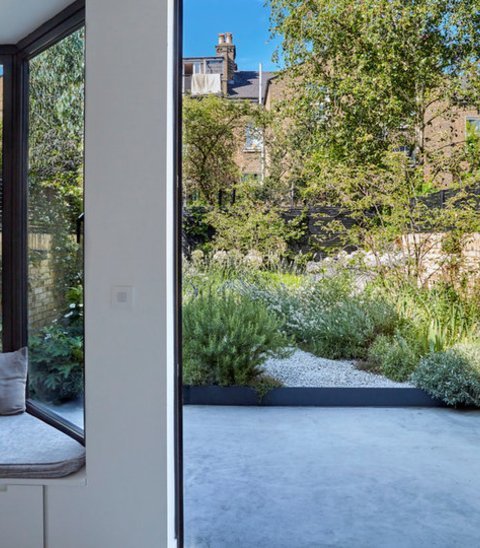
A picture of a medium-sized, gravel, backyard garden path in the springtime of the Mediterranean.
Radio Exitos Musicales
#london architects#architects east london#house extension cost#residential architects london#north london architects#architects west london
0 notes
Text
London Design & Build: Top Contractors for Architectural Design in Fulham & Beyond

Looking for reliable and experienced contractors to bring your dream projects to life? Look no further than London Design & Build, recognized as the Top Building Contractors in London. We specialize in delivering high-quality Architectural Design Services, combining innovation, precision, and a client-first approach to create stunning spaces that meet your needs and exceed your expectations. From residential to commercial projects, we’re dedicated to transforming visions into reality with unmatched expertise. Learn more about our journey, values, and commitment to excellence.
For More Informations Contact us : +44 7982 573 218 Or [email protected]
#Top Building Contractors in London#Architectural Design Services London#Design & Build Services#Building Contractors#Double Storey Extensions#New Build Contractors#Rear Extension#Side Return Extensions#New Build Architects#Flat Conversions#Velux Loft Conversion#House Extensions
1 note
·
View note
Text

Aberdeen Park House is a minimal home located in London, United Kingdom, designed by Neil Dusheiko Architects. At first glance, the house appears to have grown organically from its Islington context, the new brick extension echoing the industrial forms of nearby Victorian warehouses. Yet this apparent simplicity masks a sophisticated understanding of light, air, and human habitation.
25 notes
·
View notes
Text
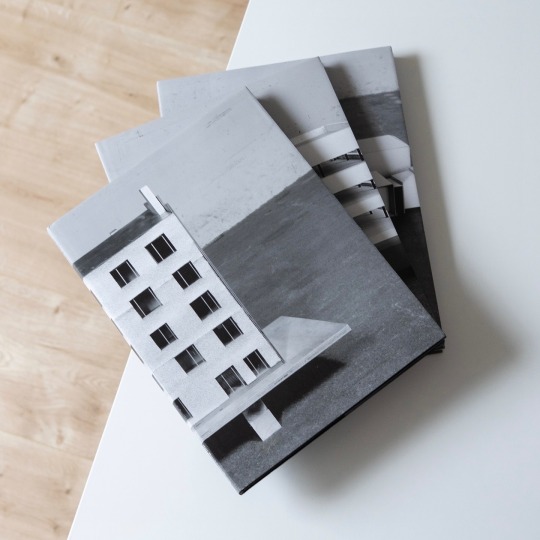

Since its founding by Emanuel Christ and Christoph Gantenbein in 1998, the Basel office Christ & Gantenbein has steadily expanded its scope and today counts among the major, internationally operating Swiss firms. In recent years they have realized the critically-acclaimed extension of Kunstmuseum Basel, the Lindt Home of Chocolate in Kilchberg or the Vaugirard Housing Block in Paris. But the current success was preceded by numerous and often unsuccessful competition entries that correspondingly take up considerable space in the office’s first comprehensive work catalogue: „Projects I-III“, published late last year by Verlag der Buchhandlung Franz und Walther König, in three volumes collects over 25 years of architectural production. In chronological order and strictly double-columned, each each project is documented in photos, plans and drawings as well as brief texts at the page footings, a somewhat austere yet lucid presentation that fits the character of a work catalogue just like the architecture of Christ & Gantenbein. By virtue of the chronological and thus non-hierarchical juxtaposition of the projects, readers are able to explore not only the well-known prestige projects but also smaller and less published projects like the Swiss Church in London where the office intervened beautifully in an existing, Palladian space or the small design of a stone stove for a chalet at Lötschental.
In addition, the volumes also include a variety of texts by and about Christ & Gantenbein, some shorter, some longer, that add a reflective layer to the work catalogue: while the architects discuss and reflect their own buildings, influences and impressions, other authors provide critical analyses of key projects like the Kunstmuseum Basel or the Vaugirard Housing Block in Paris but also comment on the interplay of sublimeness, radicalism and boldness in the office’s oeuvre.
With „Projects I-III“ Christ & Gantenbein presents the first three volumes of their work catalogue, nicely designed and easy to handle, characteristics that will hopefully continue in future volumes of this ongoing project!
15 notes
·
View notes
Photo

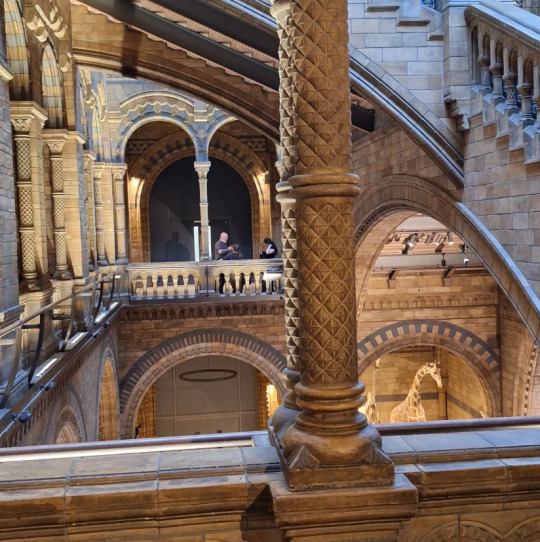
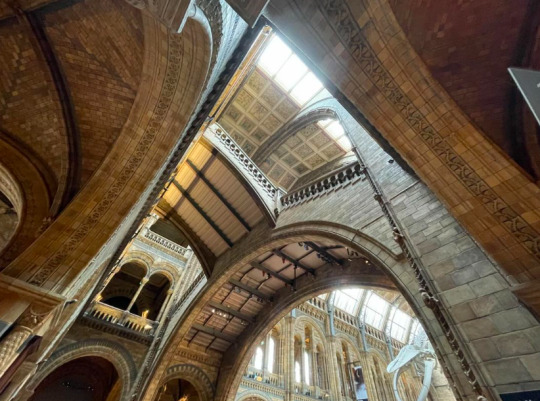




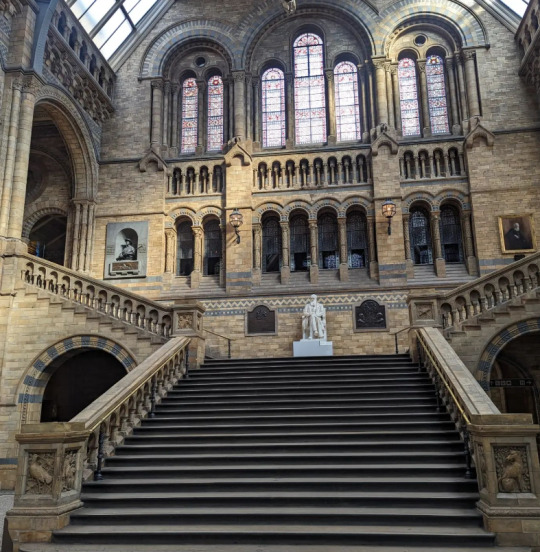


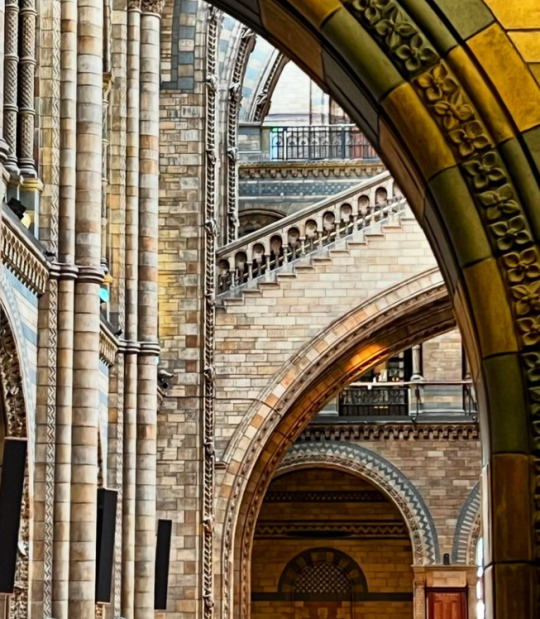
Natural History Museum - London
The Museum first opened its doors on 18 April 1881, but its origins stretch back to 1753 and the career of Sir Hans Sloane, a doctor and collector. Sloane travelled the world as a high society physician. He collected natural history specimens and cultural artefacts along the way. After his death in 1753, Parliament bought his extensive collection of more than 71,000 items, and then built the British Museum so these items could be displayed to the public. In 1856 Sir Richard Owen - the natural scientist who came up with the name for dinosaurs - left his role as curator of the Hunterian Museum and took charge of the British Museum’s natural history collection. Unhappy with the lack of space for its ever-growing collection of natural history specimens, Owen convinced the British Museum's board of trustees that a separate building was needed to house these national treasures. He drew-up a rough architectural plan in 1859 entitled 'Idea of a Museum of Natural History'. The plan was later referred to by architect Alfred Waterhouse in the design of the Natural History Museum. In 1864 Francis Fowke, the architect who designed the Royal Albert Hall and parts of the Victoria and Albert Museum, won a competition to design the Natural History Museum. However, when he unexpectedly died a year later, the relatively unknown Alfred Waterhouse - a Quaker architect from the north of England - took over and came up with a new plan for the Museum. Waterhouse used terracotta for the entire building as this material was more resistant to Victorian London's harsh climate. Construction began in 1873, and the result is one of Britain’s most striking examples of Romanesque architecture — considered a work of art in its own right and has become one of London's most iconic landmarks. Owen's foresight has allowed the Museum to display very large creatures such as whales, elephants and dinosaurs, including the beloved Diplodocus cast that was on display at the Museum for 100 years. He also demanded that the Museum be decorated with ornaments inspired by natural history. And he insisted that the specimens of extinct and living species kept apart at a time when Charles Darwin’s theory of evolution was revealing the links between them. Along with incorporating Owen’s ideas into his plans, Waterhouse also designed an incredible series of animal and plant ornaments, statues and relief carvings throughout the entire building – with extinct species in the east wing and living species in the west. Waterhouse sketched every one of these sculptures in great detail, even asking Museum professors to check the scientific accuracy of his drawings, before creating the fantastic decorations that complement the Museum’s exhibitions. While the building reflects Waterhouse’s characteristic architectural style, it is also a monument to Owen’s vision of what a museum should be. In the mid-nineteenth century, museums were expensive places visited only by the wealthy few, but Owen insisted the Natural History Museum should be free and be accessible to all. The Museum took nearly eight years to build, and moving the collections from the British Museum in Bloomsbury was a huge job. Relocating the zoological specimens, which included huge whale bones and taxidermy mammals, took 394 trips by horse and cart spread over 97 days. The Natural History Museum finally opened in 1881. The building’s decorative and Romanesque style by Waterhouse is reminiscent of medieval European abbeys, but it is also a monument to Owen’s vision of what a museum should be: the world’s largest and finest institution dedicated to natural history.


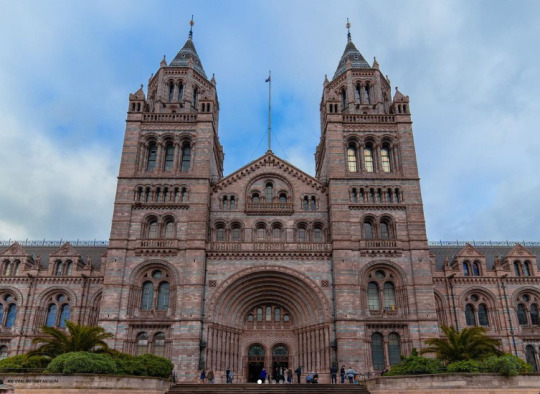
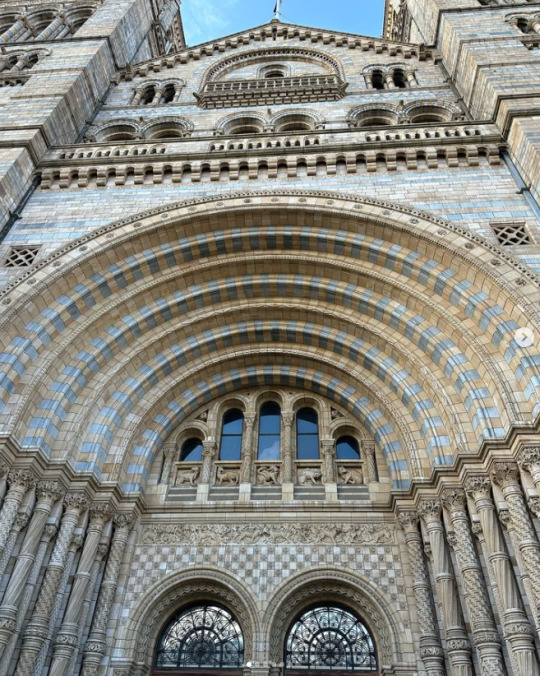
https://www.nhm.ac.uk/about-us/history-and-architecture.html
https://www.nhm.ac.uk/visit/virtual-museum.html
#other's artwork#architecture#Romanesque#Alfred Waterhouse#Sir Richard Owen#terra cotta#Natural History
72 notes
·
View notes
Text
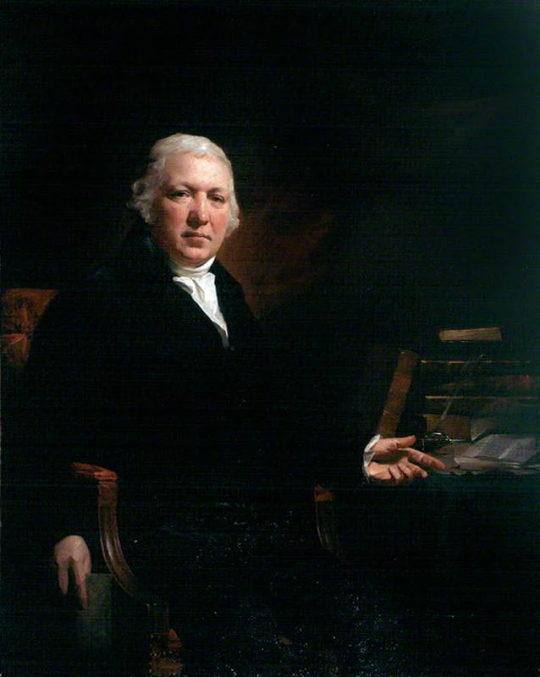


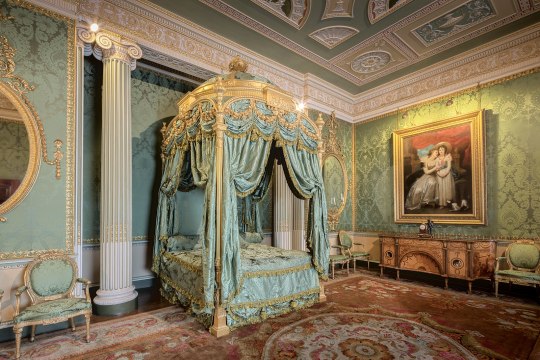
On July 3rd 1728 Robert Adam, the Scottish architect, furniture and interior designer, was born in Kircaldy, he has been described as a rock star of architecture.
Robert Adam was the son of a Stonemason, William a stonemason who took up architecture, the family moved to Edinburgh when Robert was eleven, where his father had become the most popular architect in Scotland.
He attended The Royal High School in Edinburgh and was noted as having a "feeble constitution" His education continued at The University of Edinburgh where his studies were interrupted in 1745 due to wee bit of upheaval when the Jacobite Army of BPC arrived and occupied the City. Added to this he fell seriously ill at the end on the year and failed to graduate. On his recovery from illness in 1746, he joined his elder brother John as apprentice to his father. He assisted his father on projects such as the building of Inveraray Castle and the continuing extensions of Hopetoun House, his father died in 1748 and Robert and his brother ran the family firm now called Adam Brothers.
In 1750 Robert decided he needed to witness the architecture around Europe and departed on his "Grand Tour" in France and Italy. He studied widely the classical Roman ruins and increased his drawing skills.
On his return he opened his own architectural practice in London and soon became established as one of the most fashionable designers amongst the High Society. His Practice was timely as there was a renewed interest in England for all things Classical and the “Palladian Movement” (Based on the proportional architecture of the Italian Andrea Palladio) had just firmly taken hold. Adam was no slavish Palladian however and his Style has become known as “neoclassical”. He adapted and developed ancient styles rather than simply copying them.
As Adam was more often than not asked to renovate existing buildings much of his work was concerned with interiors. He was obsessive over every detail and designed everything himself down to plasterwork and fireplaces. He moved beyond Roman Style and was influenced by Greek, Byzantine and Italian Baroque design.
Adams work in Scotland include the Royal Exchange, in Edinburgh's High Street on the Royal Mile, The Royal Infirmary, Glasgow, Register House, Edinburgh and The Old College quadrangle at the University of Edinburgh.
In England he designed my favourite, Pulteney Bridge in Bath, as well as Kedleston Hall and Marlborough House, Brighton.
I think I have featured most of these buildings previously in posts so would like to showcase some of the meticulous interior work that Robert Adam was known for. As I've said before I am not a fan of the country houses, the places that reek of wealth, give me a ruined castle any day, but you have to admire the work that went into these interiors.
Pics are of Adam, the Red Drawing Dining room at Hopetoun House, made famous by the fictional Duke of Sandringham in TV Series Outlander, the staircase of Culzean Castle, and the State Bedroom at Harewood House, West Yorkshire, England.
10 notes
·
View notes
Text
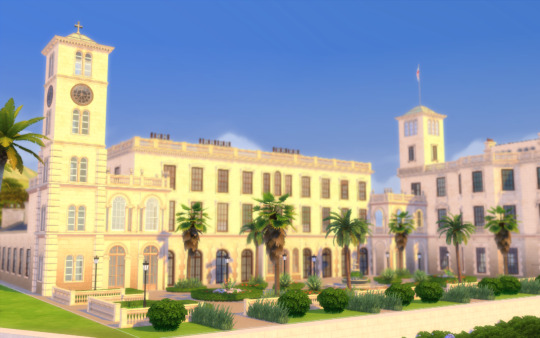

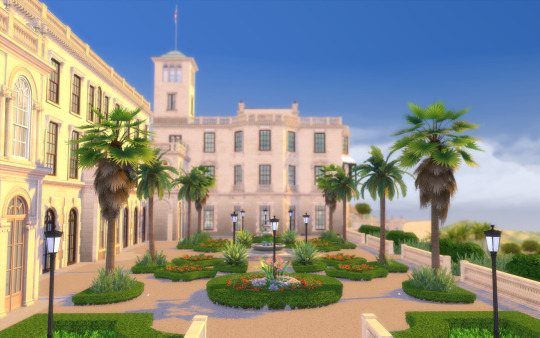
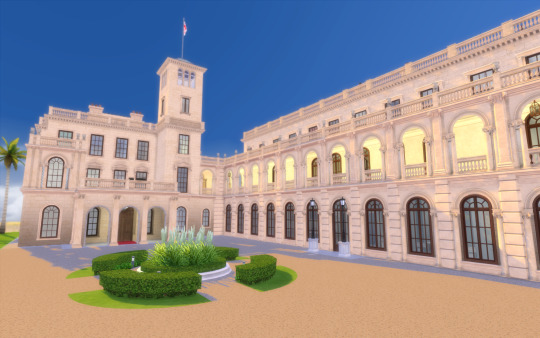
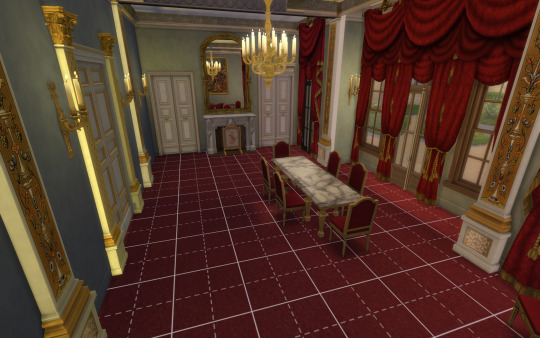
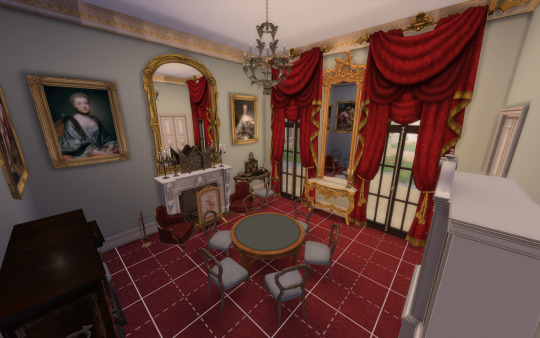
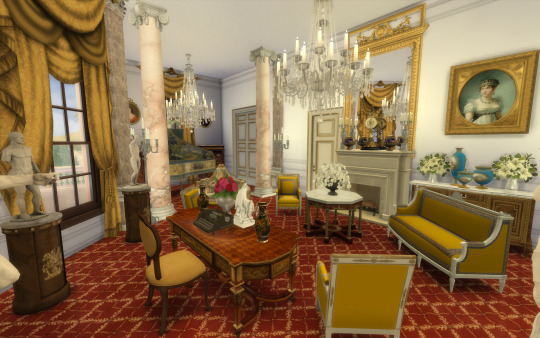
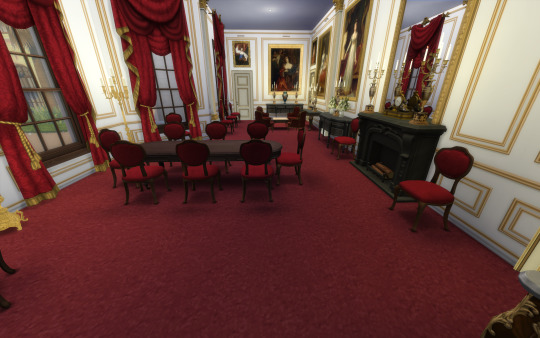


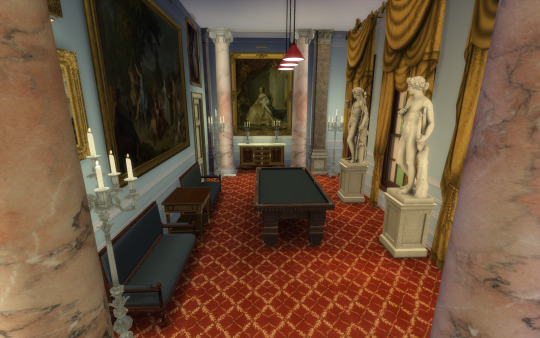

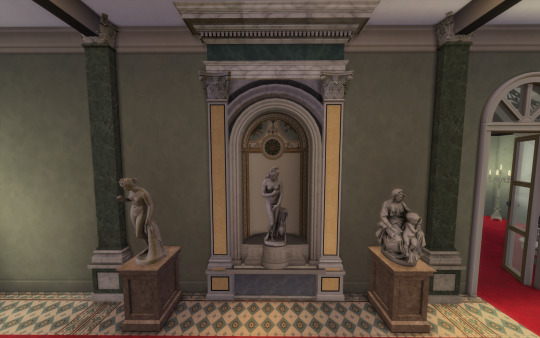
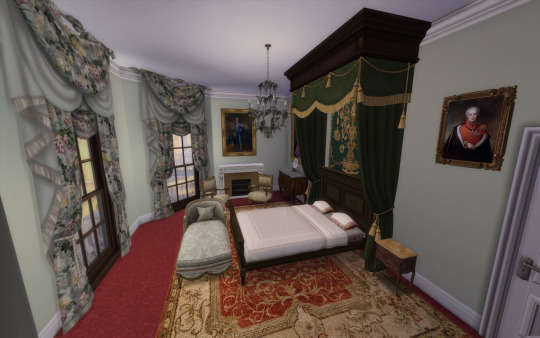
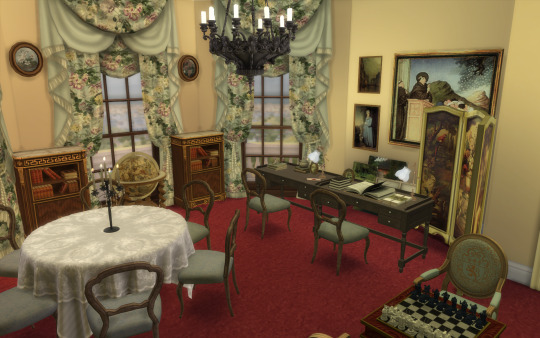
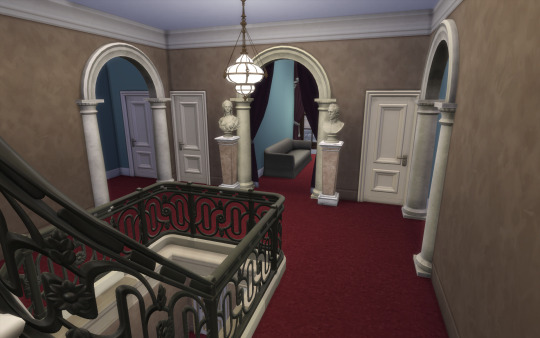
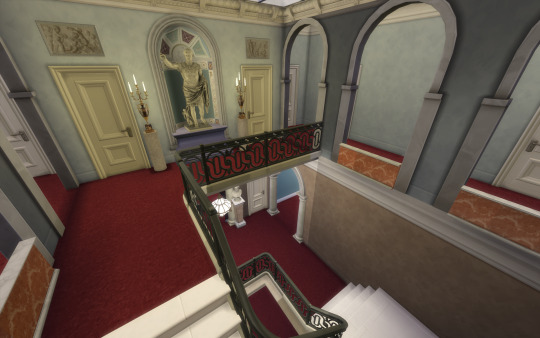
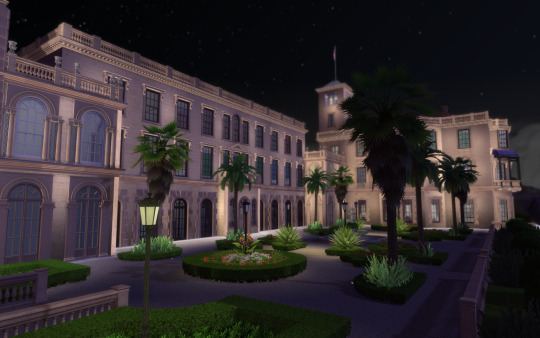


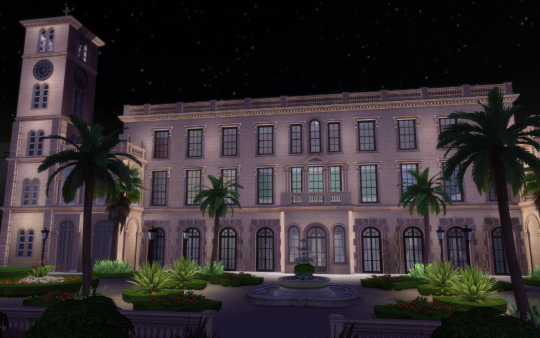
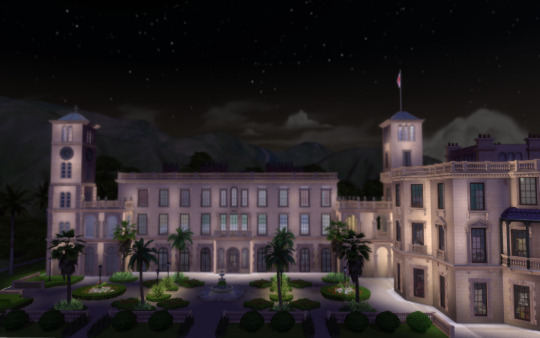
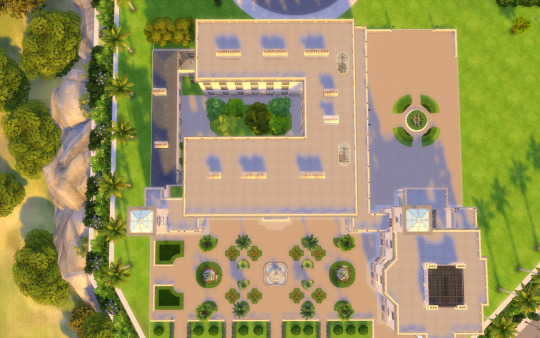
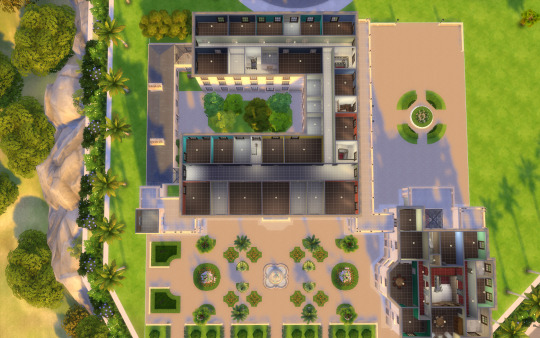
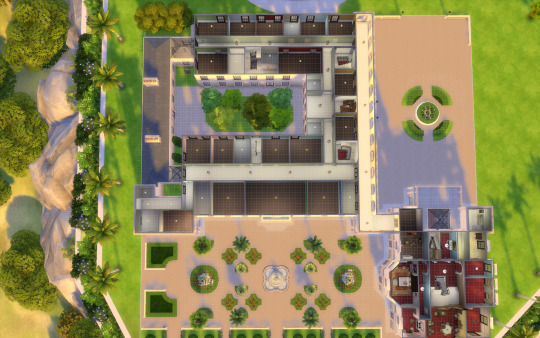

Osborne House
Hace un instante
Hi guys!!
I'm sharing Osborne House . This is the 11th building for my English Collection.
This was also a request from one of my patreons, so I hope it does not desapoint.
History of the house: In 1843 Queen Victoria and Prince Albert were looking for a seaside retreat for their growing family to escape the pressures of London and Windsor. The Osborne estate, then owned by Lady Isabella Blachford, was recommended to them by the Prime Minister, Sir Robert Peel (1788–1850).
The estate was initially leased, then bought in May 1845 for £28,000. As the existing house was too small, an extension was required. Queen Victoria and Prince Albert did not want to be restricted by the Department of Woods and Forests, which was then in charge of all government building, so Prince Albert bypassed the department’s architects. Instead he commissioned Thomas Cubitt (1788–1855), the master builder and developer of much of the Duke of Westminster’s Belgravia estate in London, to advise him.
Cubitt recommended that rather than alter the old house it would be best to build a new one, and proceeded to design it in collaboration with Prince Albert.
OSBORNE TAKES SHAPE
The first phase of building was completed in 1846 with the Pavilion, housing the private rooms of Queen Victoria and Prince Albert and the royal nurseries. The household wing, containing accommodation for members of the royal household who accompanied Queen Victoria to Osborne, was completed in 1848.
After the old house was demolished in 1848, the main wing, completed in 1851, was built on its site, and was linked by a long corridor to the household wing. The main wing was used initially by the royal children. The terraces on the north-east side of the Pavilion and main wing were designed to complement the house and are filled with the signature features of classical Italian gardens.
Neighbouring Barton Manor was thoroughly ‘restored’ by Cubitt and its outbuildings were organised as a model farm. Other building projects included estate cottages and lodges, a dormitory for male servants, and a landing house for the coastguard, with a sea wall along the coastal edge of the estate.
For more info: https://www.english-heritage.org.uk/visit/places/osborne/history-and-stories/history/#:~:text=Queen%20Victoria%20and%20Prince%20Albert,after%20Albert's%20death%20in%201861.
------------------------------------------------------------------------------
This house fits a 64x64 lot and was downsized to fit, so it lost some of its glamour.
It is not furnished except for the state rooms and some private bedrooms (for pictures and reference), as it was requested for that purpose.
Hope you like it.
You will need the usual CC I use:
all Felixandre cc
all The Jim,
SYB
Anachrosims
Regal Sims
King Falcon railing
The Golden Sanctuary
Cliffou
Dndr recolors
Harrie cc
Tuds
Lili's palace cc
Complete list of CC: https://docs.google.com/spreadsheets/d/1ybrxiDhssT3B_4My4KMjm0xNyMDkJ1kNafobQIEJLzQ/edit?usp=sharing
Please enjoy, comment if you like it and share pictures with me if you use my creations!
Early access (public release Sept-30)
Download: https://www.patreon.com/posts/105201540
#sims 4 architecture#sims 4 build#sims4#sims 4 screenshots#sims4play#sims 4 historical#sims4building#sims4palace#sims 4 royalty#ts4#ts4 download#ts4 simblr#ts4 gameplay#ts4 legacy#ts4cc#the sims 4#the sims community#simblr#sims 4#the sims#sims
44 notes
·
View notes
Text
Inside Josh Widdicombe’s home with butcher shop tiles and a £6,000 bath (The Sunday Times, 10.11.24)

The comedian’s interior designer wife, Rose Hanson, has restored an 1860s house with copper pipes, vintage finds and lots of books.
[NON-PAYWALL / ORIGINAL]
The comedian Josh Widdicombe and Rose Hanson, his interior designer wife, have restored a 19th-century former artist’s house in the village of Mullion, on the Lizard. The star of Channel 4’s The Last Leg is in the process of writing gags for his 2025 stand-up tour. Called Not My Cup of Tea, because he gave up alcohol last year and now drinks eight cups of “builder’s tea” a day, the show will be a catalogue of gentle gripes on topics from motorway services to children’s party bags. He says inspiration strikes during the eight-hour drive from where they live in Hackney, east London, to their Cornish home, when he has the captive audience of Hanson and their kids, Pearl, seven, and Cassius, three. Traffic jams on the A303 are evidently fertile ground for middle-aged grumbles.

We are speaking during half-term, and the final stage of the renovation — the landscaping of their three-quarter-acre plot — is in ear-splitting full swing. A sauna has already been installed and by the time the diggers depart there will be a fireplace and outdoor kitchen on the patio, and a natural swimming pool in the garden. To a backing track of excavations, the couple, both 41, explain that they picked this glorious spot because Josh grew up in Haytor Vale, near Torquay, and his parents still live nearby in Devon, while Hanson (whose mother, incidentally, helped to create Zippy, the puppet from the 1980s kids’ show Rainbow) remembers Cornwall fondly from childhood holidays. “It felt like a natural place for us to look,” she says.
The 1860s house, called Moorlands, previously belonged to a local abstract artist, Barrie Cook, whose works are in the Tate and the Government Art Collection. “He’s got Wikipedia. So he’s legit,” Widdicombe says. “I don’t know much about art but if someone’s got a Wikipedia page, that’s quite a big deal.” Along with the rambling building, they took on the expectations of Cook’s family. “We had quite a strange day of meeting the whole extended family after we’d bought the house,” Widdicombe says. “They just wanted to know that this place was going into the hands of people that would care about it and treat it well.” The couple have done the Cooks proud, with a sympathetic top-to-toe restoration and a reconfiguration of the layout to meet the demands of modern family life.

They bought Moorlands in October 2022 for under £850,000 and are likely to spend the same again on renovations. Work started in January 2023, knocking through walls upstairs and between the sitting room and dining room on the ground floor. Six months later, the old extension was demolished and by November every single window in the house had been replaced. “They’re basically identical to the windows that were here, but they’re not falling apart,” Hanson says. They took the property from five bedrooms and two bathrooms to six bedrooms and seven bathrooms, overhauled the electrics, got rid of the oil tank and replumbed with help from a local company called The Braze. “It’s like an incredible work of art with all of these amazing copper pipes,” she says.

By March this year the lights and heating were on. Hanson sourced the oak flooring from Dartmoor firm Coppice and Crown. The most striking change was the replacement of the old sunroom on the first floor. “The upstairs conservatory was quite amazing. But it was just completely impractical because it was absolutely boiling, and there was quite bad damp in the room below. So we got an architect involved and designed two double bedrooms with en suites, and a beautiful formal dining room underneath.” Hanson repositioned the kitchen at the front of the house, where the family would benefit from the glorious garden view. By April 24, every room in the house was finished, and they had their first guests to stay.
Now they intend to spend six weeks of the year enjoying their seaside getaway, and let it out in between family visits. So how do they live when in Cornwall? Hanson lifts weights in her home gym and plans to learn to surf at the nearby Dan Joel Surf School. “I hate stuff like that,” says Widdicombe, who can’t swim. “I like a walk. I like running on the treadmill, but I don’t like anything that takes me outside of my comfort zone, ideally. The reason to be on holiday is to relax, not to do anything that makes me stressed.”

He doesn’t mean to party, either. It’s a part of the world notorious for celeb spotting, with notable locals including fellow comics David Baddiel and Morwenna Banks, but the couple plan to lead a quiet life. “We don’t really have parties because we’ve got young children,” Hanson says. “And the people who come and stay have young children too. I mean, we’re lucky if we all get downstairs again after the kids’ bedtime at nine o’clock.” The wildest evening at Moorlands so far was, Widdicombe says, “The first week we stayed, we had four couples and eight children in the house, and we managed to get six kids in the bath at once.”

The tub in question, in the family bathroom, is a £6,000 Rockwell, from Water Monopoly, which Hanson describes as “an extravagant purchase”. A magpie who is constantly acquiring vintage treasures, she added inexpensive second-hand touches to complete the decor. “We found this amazing little yellow bathroom cabinet that just kind of makes the whole room pop. I’m a real hoarder of second-hand fabrics from eBay and I’d got this vintage Pierre Frey fabric patterned with tassels and gems, which we made into a blind.”
Asked how much of the design is her husband’s idea, Hanson is quite clear. “He doesn’t have any say. I don’t even run anything past him, except budget. There are times where there are things that he would really like. When we moved into our first house, Josh really wanted a bread bin that said ‘Bread’ on it. So I made that happen. Then there was [a request for] a hot water tap. So fine. Yeah, you can have your hot water tap.”

Widdicombe has no complaints. “I’d rather someone else who knows what they’re doing takes the lead,” he says. “I know what I’m good at and I don’t think Rose is ever going to give me notes on my stand-up. And in the same way, I’m not going to give her notes on this.” Hanson responds: “You’re basically the dream client.”
Before they moved in together, the comedian’s taste was based around displaying his music collection. “I lived in a rental property in Turnpike Lane [north London] when I was in my twenties and I didn’t have much money. I had a wall of about 600 CDs.” Now his focus has switched to books as decor. “I buy a lot of books and I’m a keeper of books. I hate it when someone says to me, ‘Can I borrow that after you’ve finished reading it?’ Because I think, ‘No, I want to put it on my wall.’ It’s like you’ve killed a deer or whatever, isn’t it, and you want to display it? If someone says that, I’ll buy them a copy of that book rather than give them my book.” So, excluding the library in his study, and keeping her hands off the hot tap and bread bin, Hanson had carte blanche to decorate the house to her taste.
She brought in her friend Charlotte Tilbury, a designer who had worked on their London home in Victoria Park, Hackney, and moved to Devon during Covid. Halfway through the works, the two women decided to start a business together and make Moorlands their first joint project: Penrose Tilbury was founded. “It’s not like work,” Hanson says. “It’s like going and hanging out with your mate and drinking rosé.” It wasn’t all wine and design chat, she corrects herself. “The hardest things to find were bathroom tiles. We did a collaboration with Original Style who made a bespoke pencil-black tile for us that we just couldn’t really find anywhere. Then the Daily Mail did a story — they must have got some pictures from our Instagram — and somebody said in the comments that our bathrooms look like a butcher’s shop. I was quite pleased with that. That was sort of the look I was going for.”
The next visit will be for New Year’s Eve, when the couple will be inviting friends for an ultra-low-key gathering. Hanson says: “We might have a glass of wine after we finish bedtime at nine o’clock.” And there will be plenty of PG Tips.
2 notes
·
View notes
Text
Trafalgar Square: Bridging Heritage and Modernity
Nestled in the heart of London, Trafalgar Square stands as an enduring symbol of the city's rich history and vibrant contemporary culture. This iconic public space transcends its geographical coordinates, serving as a living embodiment of London's dynamic evolution over centuries. From its historical genesis to its present-day relevance, Trafalgar Square continues to captivate both residents and tourists, encapsulating the essence of London's journey.
Historical Roots: Genesis and Transformation
The tale of Trafalgar Square commences in the early 1800s. Conceived as a tribute to the Battle of Trafalgar—a pivotal naval victory in 1805 led by Admiral Lord Nelson against the combined French and Spanish fleets—the square was christened in honor of the battle and as a homage to Lord Nelson's legacy. Architect John Nash, renowned for his grand designs, was instrumental in shaping the square's layout. Central to the square's design is the awe-inspiring Nelson's Column, crowned by a statue of Admiral Lord Nelson and flanked by four majestic lion sculptures crafted by Sir Edwin Landseer—a powerful representation of Britain's strength.

Trafalgar Square's evolution transcends its commemorative beginnings. The mid-19th century witnessed the construction of the National Gallery on the square's northern flank, transforming it into an artistic haven housing a treasure trove of European paintings. This artistic infusion added another layer to the square's significance.
Cultural Hub: A Gathering Ground for All
Beyond its historical and architectural appeal, Trafalgar Square's true allure lies in its role as a communal space that brings together diverse individuals. It is a canvas where history harmonizes with contemporary culture. The expansive square has borne witness to a tapestry of events, ranging from political rallies to cultural fiestas.
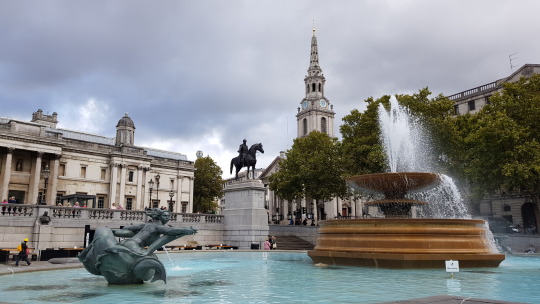
Arguably, the most iconic of these events is the annual New Year's Eve celebration. An international crowd converges here to usher in the new year with a dazzling fireworks spectacle, framed against the backdrop of Trafalgar Square's iconic features. The atmosphere is charged with an undeniable energy, encapsulating a sense of global unity and festivity.
Beside the New Year's Eve tradition, Trafalgar Square hosts an array of cultural affairs, spanning music festivals to avant-garde art installations. The Fourth Plinth, initially designated for an equestrian statue that never materialized, now serves as a rotating exhibit for contemporary artworks. This ever-changing display transforms the plinth into a modern-day creative platform, reflecting the fluid nature of art and culture.
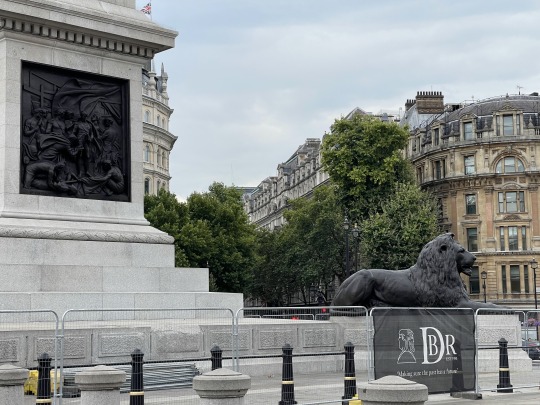
A Symbol of Cohesion and Expression
Trafalgar Square's importance extends beyond mere festivity. It has stood as a podium for expression and catalyst for change throughout its history. Its open expanse and central location render it a prime arena for public dissent and discourse.
Significantly, Trafalgar Square has been a nucleus for protests, demonstrations, and assemblies. These range from workers' rights rallies to movements against apartheid, underpinning the square's role as a locus for unity and free expression.
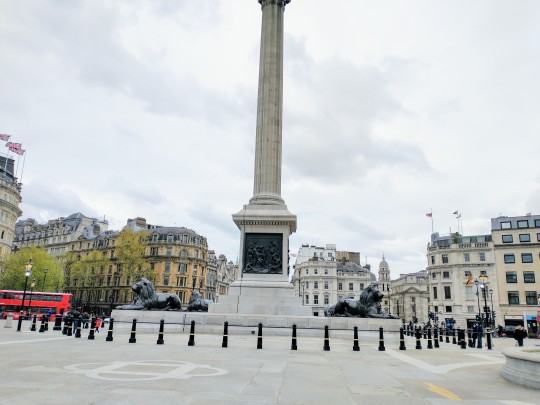
Safeguarding the Legacy: Conservation and Tomorrow
Given its integral role in London's identity, preserving Trafalgar Square's heritage is paramount. Recent years witnessed extensive restoration efforts, ensuring the square's historical integrity while integrating contemporary amenities to enhance public experience.
This restoration endeavor was a collaborative endeavor, uniting architects, historians, and conservationists. The aim was to maintain the delicate equilibrium between historical significance and modern functionality.
Looking ahead, Trafalgar Square's legacy as a guardian of London's past, present, and future is secure. Its adaptability to changing times while retaining its core essence speaks to its enduring significance.

In Conclusion
Trafalgar Square transcends its geographical confines to encapsulate London's soul. From its origins as a tribute to Admiral Lord Nelson's triumph to its present-day role as a cultural nexus, the square stands as a living embodiment of London's evolution. It has been a stage for history, art, culture, and activism, personifying the multi-faceted identity of London. Trafalgar Square's legacy as a symbol of unity, expression, and unyielding importance ensures it will continue to grace the cityscape for generations to come.
Trafalgar Square Video
youtube
Trafalgar Square Location
Member Spotlight
The Centre for Advanced Facial Cosmetic and Plastic Surgery: Dr Julian de Silva
23 Harley St, London W1G 9QN, United Kingdom
+44 20 8748 2860
If you are looking for Facelift surgery london
For patients who demand the best results and attention to detail with facial cosmetic surgery Dr Julian De Silva is the first choice. Based in the World-Renowned Harley Street medical area of London, Julian specializes in Only facial treatments, specifically face and neck lifts, eyes and nose surgery, and is known for producing natural-looking results. He has developed signature Vertical face restore 7, an advanced deep plane facelift technique with other facial procedures to give a natural & youthful rejuvenation.
REVIEWS
CALL
GMB POST
DRIVING DIRECTION
2 notes
·
View notes
Text







Aden Grove, London - Emil Eve Architects
#Emil Eve Architects#architecture#design#building#modern architecture#interiors#minimal#house#house design#modern#minimalist#house extensions#home interior#london house#cool architecture#beautiful design#beautiful home#colourful#kitchen#living room#dining room#light#garden#tiles#architecture blog#balcony#bedroom#hallway#london#british architecture
190 notes
·
View notes
Text
Thinking About a Loft Conversion? Here's What to Know Before You Call a Company in London

Let’s face it — living in London comes with a space problem. Whether you’re in a terrace house in Walthamstow or a semi in Southfields, most of us could do with a bit more room. But moving? Expensive. Stressful. And with house prices the way they are, not always worth it.
That’s where a loft conversion comes in. It’s one of the most popular ways London homeowners are adding space and value to their homes. And if you’re thinking of going down that road, finding the right loft conversion company in London is absolutely key.
But before you start getting quotes, here’s what you need to know — straight up, no fluff.
Why Even Bother With a Loft Conversion?
Simple: you get an extra room (or two), and you don’t have to move house to get it.
A good loft conversion can turn your dusty old attic into a:
Master bedroom with en-suite
Home office
Guest room
Chill-out space
Teenage hideaway
And here’s the best part — you’ll likely boost your property’s value by 15–20%. In London, that can mean tens (if not hundreds) of thousands in added value.
So, What Does a Loft Conversion Company Actually Do?
A proper loft conversion company doesn’t just show up and start hammering. They guide you through the whole process:
Initial Consultation – They’ll check if your loft is suitable and talk about what’s possible.
Design & Drawings – Some companies have in-house architects; others work with freelancers. Either way, they’ll help with layouts, lighting, and flow.
Planning Permission (if needed) – Most lofts fall under permitted development, but if not, they’ll help with the paperwork.
Construction – This is where the magic happens. From putting in steels and dormers to electrics and plumbing.
Finishing Touches – Plastering, painting, flooring — they’ll do it all (unless you want to handle some of that yourself).
The good ones keep you updated throughout. The great ones make it feel easy.
Types of Loft Conversions You’ll See Around London
Not every loft is the same. Depending on your house style and roof shape, you might go for:
Velux Conversion – Cheapest and simplest. Great if you’ve already got decent headroom.
Dormer Conversion – The most popular choice. Adds a box-shaped extension on the roof for loads more space.
Hip-to-Gable – Ideal for end-of-terrace or semi-detached homes. Straightens out the sloping side of the roof.
Mansard – Fancy, pricey, and very roomy. Often seen on period homes and usually needs planning permission.
A good loft conversion company will tell you which type fits your house — and your budget.
What to Look for in a Loft Conversion Company in London
Honestly, not all companies are created equal. Some are amazing. Some… not so much.
Here’s what to keep an eye out for:
Experience with London homes – Working in the city means tight access, parking issues, and older buildings. You want a team that knows the drill.
Full project management – It’s way easier if they handle design, build, and permissions all in-house.
Transparent quotes – No vague estimates. You want itemised breakdowns and honest timelines.
Previous work – Ask to see real-life examples, and maybe even visit a completed project if they allow.
Reviews – Trustpilot, Google, Checkatrade — read what real people are saying.
Bonus points if they offer a fixed-price contract and don’t pressure you into anything.
Final Thoughts
Getting a loft conversion in London is one of the smartest upgrades you can make to your home. But it’s not something to rush into. Take your time, speak to a few companies, ask loads of questions, and trust your gut.
A reliable loft conversion company in London will help you unlock your home’s hidden potential — without the stress, guesswork, or budget surprises.
And before you know it, that dusty old attic could become the best room in the house.
0 notes
Link
0 notes
Text

Studio for a Potter is a minimalist space located in London, United Kingdom, designed by Clementine Blakemore Architects. The renovation of a historic house, originally built in 1845, has provided a new studio space for potter Tanya McCallin. This project focused on opening up and partially rebuilding the rear extension, resulting in a spacious and light-filled studio that connects directly to the garden.
116 notes
·
View notes
Text
Renovation Made Easy with Builders in Hove and Shoreham
Renovating your home can be one of the most exciting – and stressful – projects you undertake as a property owner. Whether you're updating a kitchen, extending your living space, or transforming an old house into a modern masterpiece, the quality of your renovation depends heavily on the professionals you hire.
For homeowners and developers along the South Coast of England, two names often come up when discussing reliable construction and home improvement: Builders Hove and Builders Shoreham. These local experts offer not just construction services, but peace of mind — turning complex renovations into smooth, well-managed experiences.
In this article, we’ll explore how working with local builders in Hove and Shoreham can simplify your renovation journey, and what you should know before getting started.
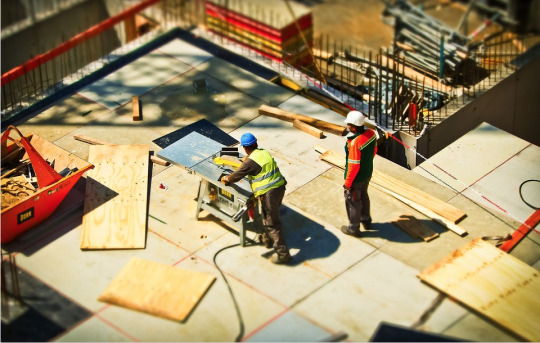
Why Renovate in Hove and Shoreham?
Both Hove and Shoreham are popular locations for property investment, renovation, and family living. With their proximity to the sea, strong transport links, and a blend of period and modern architecture, these areas offer a great canvas for property transformation.
Hove:
Hove is known for its Victorian and Edwardian homes, wide avenues, and charming townhouses. Renovations in Hove often involve:
Loft conversions
Kitchen extensions
Period property restorations
Shoreham:
Shoreham, with its seaside charm and riverside setting, appeals to homeowners looking for a balance between coastal life and accessibility to Brighton or London. Popular projects here include:
Open-plan redesigns
Garden studios
Energy-efficient upgrades
No matter where you are in your renovation journey, hiring the right builder can make the difference between success and setbacks.
What Sets Local Builders Apart?
Working with local builders offers a number of advantages over national firms or general contractors who lack knowledge of the area.
1. Local Knowledge
Builders in Hove and Shoreham understand local planning regulations, typical property structures, and council requirements. This ensures fewer surprises during the process.
2. Established Supplier Networks
Local builders often have existing relationships with trusted suppliers and tradespeople — from electricians and plumbers to plasterers and tilers — saving you time and reducing costs.
3. Reputation You Can Trust
Reputable builders rely on word of mouth. When a builder in your area is known for delivering quality work, you can speak directly to former clients and even visit completed projects nearby.
Planning Your Renovation: Key Steps
Renovating a home doesn’t have to be overwhelming. Here’s a simplified roadmap to get you from idea to completion.
Step 1: Define Your Vision
Start with clear goals. Are you updating for lifestyle improvements, property value, or energy efficiency? Think about layout changes, design features, and materials.
Step 2: Set a Budget
Be realistic about costs and include a contingency (usually 10-15%) for unexpected issues. Local builders can offer estimates based on similar projects in the area.
Step 3: Choose the Right Builder
When selecting Builders Hove or Builders Shoreham, consider:
Experience with your type of project
Portfolio of completed work
Reviews and testimonials
Accreditations or memberships (e.g., FMB, TrustMark)
Step 4: Get a Detailed Quote
A professional quote should break down materials, labour, timelines, and payment stages. Avoid vague pricing.
Step 5: Secure Planning Permission (if needed)
Local builders often assist with planning applications or recommend architects who are familiar with the council’s requirements.
Step 6: Sign a Contract
Protect both parties by outlining scope, schedule, payment terms, and dispute resolution methods in writing.
Common Renovation Services Offered
Whether you’re updating a single room or transforming an entire property, most Hove and Shoreham builders offer the following:
Loft Conversions: Popular for adding bedrooms or home offices
Extensions: Rear and side returns to expand living space
Kitchens & Bathrooms: Custom fitting and plumbing
Full Renovations: Stripping a property back to its structure and rebuilding
Eco Upgrades: Insulation, solar panels, underfloor heating
Garden Rooms: Ideal for studios or remote workspaces
Tips for a Smooth Renovation Process
Communicate Regularly – Weekly check-ins can prevent misunderstandings.
Stay Flexible – Delays can happen; materials may be back-ordered or weather-dependent.
Trust the Process – A good builder will guide you through challenges with solutions.
Inspect the Work – Don’t wait until the end. Inspect at each major stage to ensure quality.
Final Thoughts
Renovating a home is a big investment — emotionally and financially. But with the right professionals by your side, the process can be enjoyable and rewarding. Whether you’re restoring a historic Hove townhouse or modernizing a seafront cottage in Shoreham, local experts have the skills and experience to bring your vision to life.
Working with Builders Hove and Builders Shoreham not only ensures local expertise but also provides a collaborative and transparent approach to building — one that turns your dream renovation into a reality with less stress and better results.
0 notes